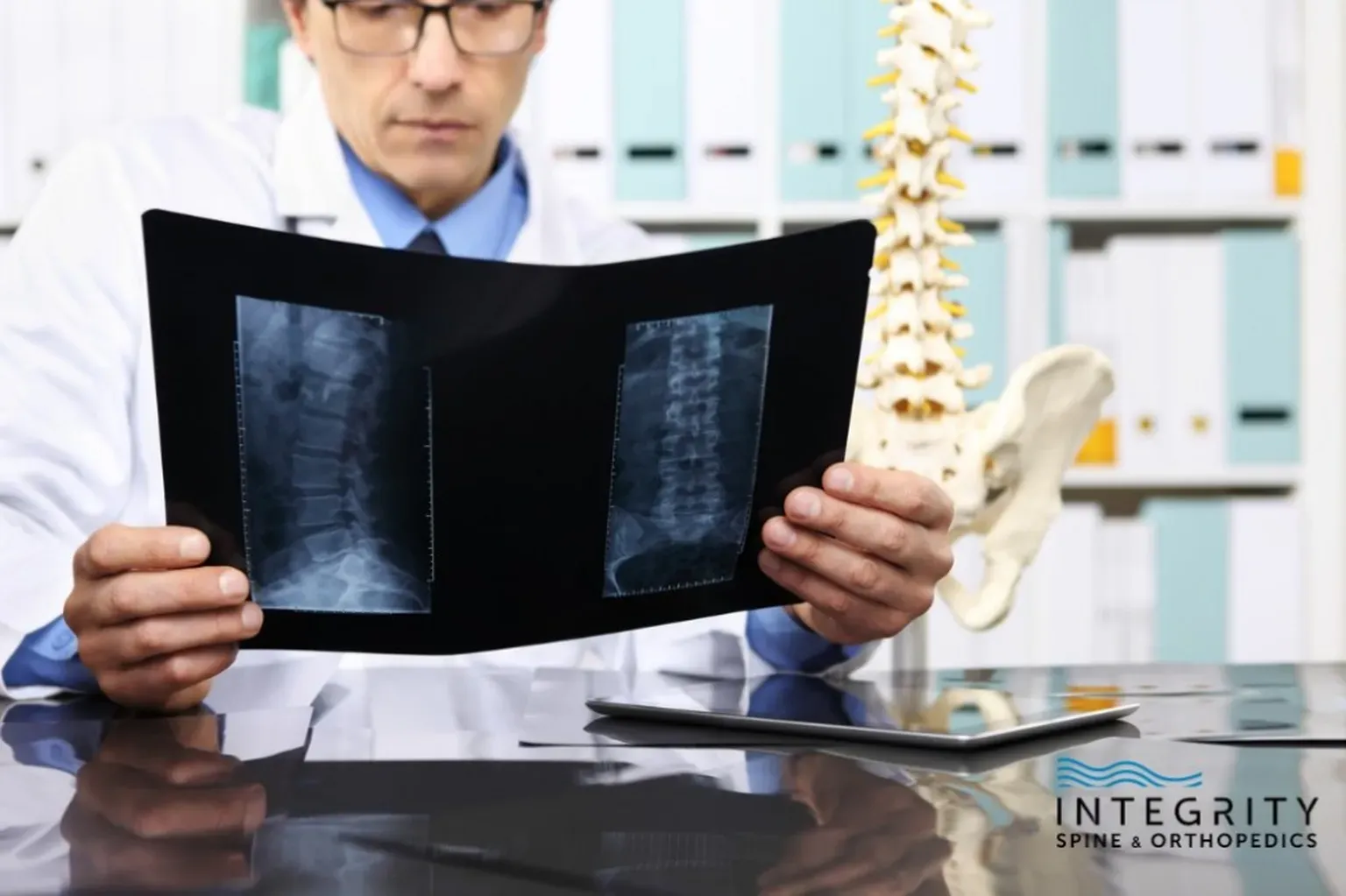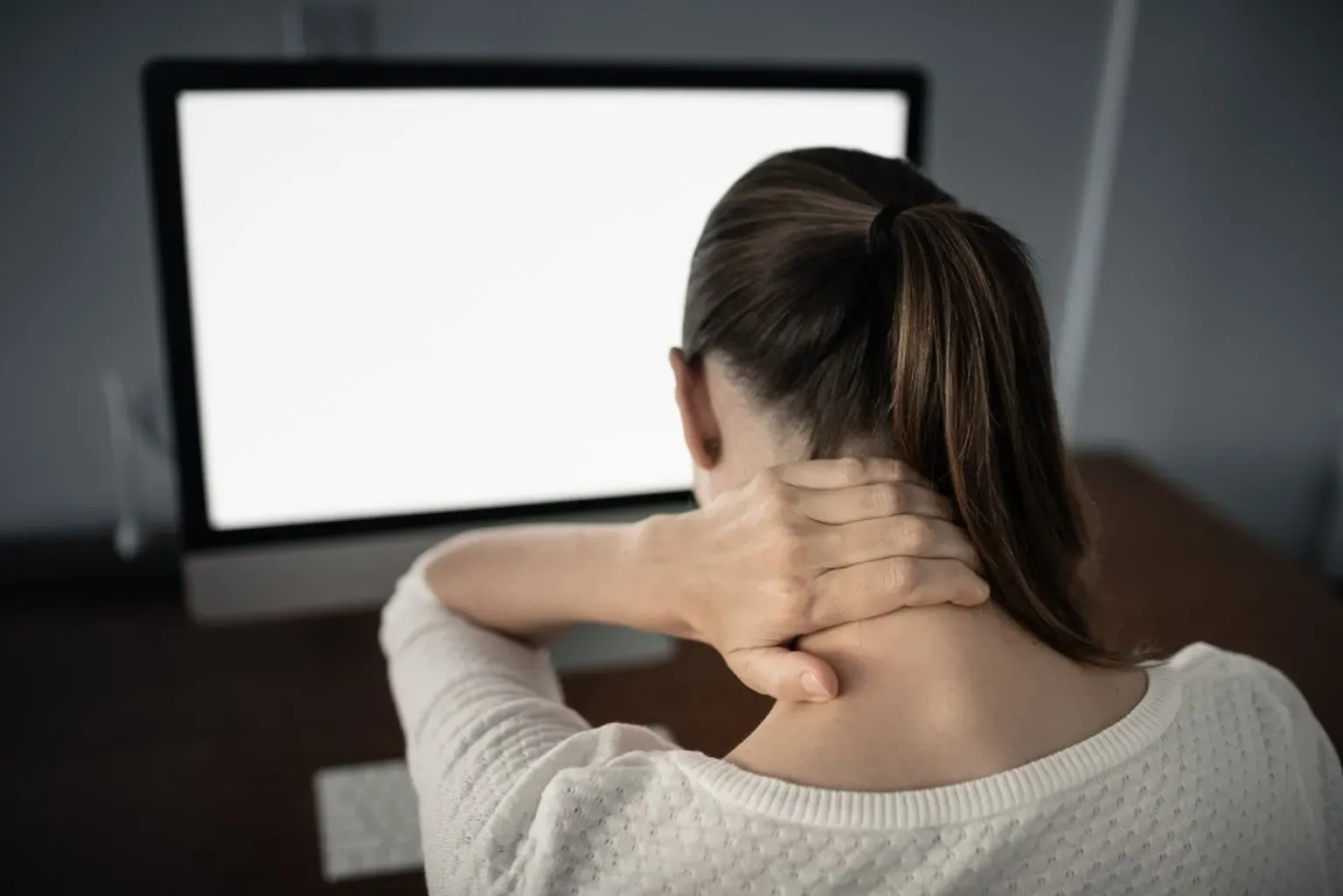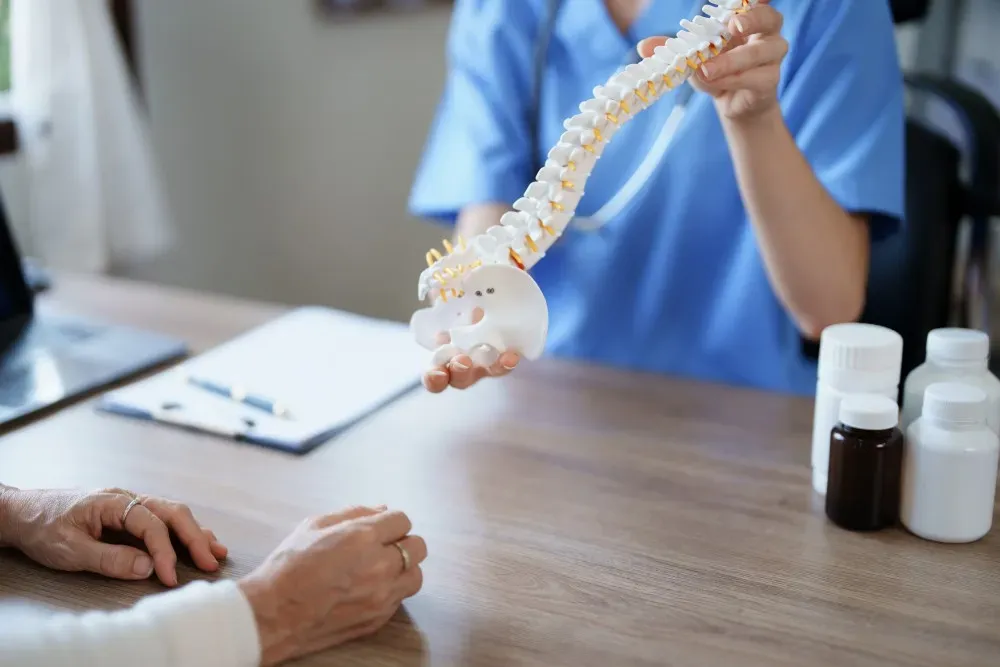Neurosurgery & Orthopedic Surgeons in Jacksonville

What is a Herniated Disc?
A herniated disc — also called a slipped disc or ruptured disc — is a common cause of back pain, sciatica and weakness among adults ages 30 to 50. Spinal disc herniation may affect anywhere from 5-20 people per 100 adults annually.
A herniated disc — also called a slipped disc or ruptured disc — is a common cause of back pain, sciatica and weakness among adults ages 30 to 50. Spinal disc herniation may affect anywhere from 5-20 people per 100 adults annually.
Read our comprehensive guide to learn what causes spinal disc herniation, symptoms, medical advice and treatment options and when you may need surgery.
HOW DOES DISC HERNIATION OCCUR?
Spinal discs sit between the 33 vertebrae in your spine. They act like cushions and shock absorbers for your spinal bones, and they also aid in spinal flexibility and movement.
Spinal discs have an outer layer and an inner layer: the outer layer (the annulus) is made of tough, fibrous cartilage that protects the soft, jelly-like inner layer (the nucleus) of the discs. Spinal discs have a high water content, but as we age they start to dry out and become stiffer and less flexible. A herniated disc occurs when a tear develops in the annulus and fluid from the nucleus leaks out.
By itself, disc herniation may be symptomless and painless. In fact, many people are only diagnosed with a slipped disc after it shows up on routine imaging tests. But if the herniated disc compresses, pinches or irritates a nearby spinal nerve or nerves, it can cause back or neck pain, leg pain and weakness.
Disc herniation can occur anywhere along the spine, but it commonly develops in the lumbar or cervical regions. You can have multiple disc herniations at one time.
CAUSES AND RISK FACTORS
Natural disc degeneration due to aging, wear and tear is the most common cause of spinal disc herniation. Less common causes of disc herniation include lifting heavy objects using back muscles, lifting heavy objects while twisting and traumatic events like falls and car accidents.
Age is the most significant risk factor for developing a slipped disc. Additional risk factors include:
- Obesity. Excess weight places more stress and pressure on the spine.
- Occupation. Physically demanding jobs that require repetitive lifting or pulling of heavy loads increases the risk of developing a slipped disc.
- A sedentary lifestyle. Lack of regular movement weakens the muscles that support your spine and place you at higher risk for back pain and injuries.
- Gender. Men are at higher risk than women for developing a slipped disc at a ratio of 2:1.
- Smoking. Smoking is linked to decreased blood flow to the spinal discs, which speeds up the process of deterioration.
Genetics and a family history of disc degeneration are also risk factors for developing spinal disc herniation.
SYMPTOMS OF A SLIPPED DISC
Many people have no symptoms or pain from a herniated disc. But if the injured disc is compressing a nerve, you may experience pain, weakness, numbness or tingling. Symptoms vary based on the location of the slipped disc and the nerves it affects.
- Lumbar disc herniation: Pain, weakness, numbness or tingling in the buttocks, thighs, calves and feet. In many cases, a herniated disc compresses a sciatic nerve and causes acute sciatica, which is why symptoms usually only affect one side of the body. You may also have backaches.
- Cervical disc herniation: Pain, weakness, numbness or tingling in the neck, shoulders, arms, hands and fingers.
Pain is often described as radiating, sharp, burning or electric. It may flare up from coughing, sneezing or moving in ways that press on a pinched nerve. Spinal disc herniation can also cause muscle weakness that affects your ability to walk or stand for long periods of time, or lift and hold heavy loads.
WHEN TO SEE A DOCTOR
In severe cases, a herniated disc can cause significant pain, trouble standing or walking, weakness and numbness or changes in bowel and bladder function. If you experience the above symptoms, seek medical advice and treatment.
To diagnose spinal disc herniation, your doctor will ask you about your medical history, recent accidents or injuries and symptom expression. He or she will perform physical and neurological exams to test your strength, reflexes, pain points and range of motion. Your doctor may take imaging tests like a CT scan or MRI, which will reveal the location of disc herniation and the affected nerves.
TREATMENT OPTIONS
In many cases, pain and inflammation from a herniated disc heals within a few weeks to a few months with conservative treatment. Your doctor may recommend some or all of the following:
1.) Rest. Modify any activities that are causing pain until symptoms resolve. Don’t resort to complete bedrest — staying active and regular movement will help reduce pain and inflammation faster. Long periods of immobility will slow your recovery time and may lead to prolonged pain and muscle weakness. Perform low-impact activities like walking or stretching as much as you can.
2.) Medications. Over-the-counter painkillers can help ease pain and inflammation. If you have significant pain or muscle spasms, your doctor might prescribe stronger painkillers, muscle relaxants or nerve pain medications.
3.) A corticosteroid injection. Corticosteroids can reduce inflammation and irritation around pinched nerves. The effects of an injection are a temporary solution.
4.) Physical therapy. Your doctor may recommend physical therapy to help you reduce pain and improve muscle strength, balance, endurance, flexibility and range of motion. A therapist can also help you practice good posture and proper body positions while sitting and standing.
Some patients also find pain relief using alternative therapies, like hot and cold compresses, chiropractic care, massages and acupuncture.
WHEN IS SURGERY AN OPTION?
You may be a candidate for surgery if pain, weakness and numbness are impacting your daily life and ability to function, or if you experience changes in bladder and bowel function due to nerve compression. If conservative treatments are not effective and you’re still experiencing significant pain after 6 weeks, your doctor will discuss surgical options with you.
The most common surgical procedure for a herniated disc is a minimally invasive discectomy. During a discectomy, the surgeon will make a small incision in your back to remove the damaged portion of the disc. Because it’s minimally invasive, there are fewer risks and recovery time is shorter.
In more severe cases, invasive surgery is performed to remove parts of the vertebrae or the entire injured disc. These types of surgeries may also require disc replacement with artificial discs or spinal fusion.
INTEGRITY SPINE AND ORTHOPEDICS TREATS SPINE CONDITIONS
Integrity Spine and Orthopedics specializes in performing minimally invasive spinal procedures for a range of spine conditions, including bulging discs and herniated discs. We also offer pain management and general orthopedic services to help you manage acute or chronic back and joint pain.
Please call us at 904-456-0017 to request an appointment to see one of our board-certified orthopedic doctors. We also offer free MRI reviews to qualified patients — contact us today for more information.




